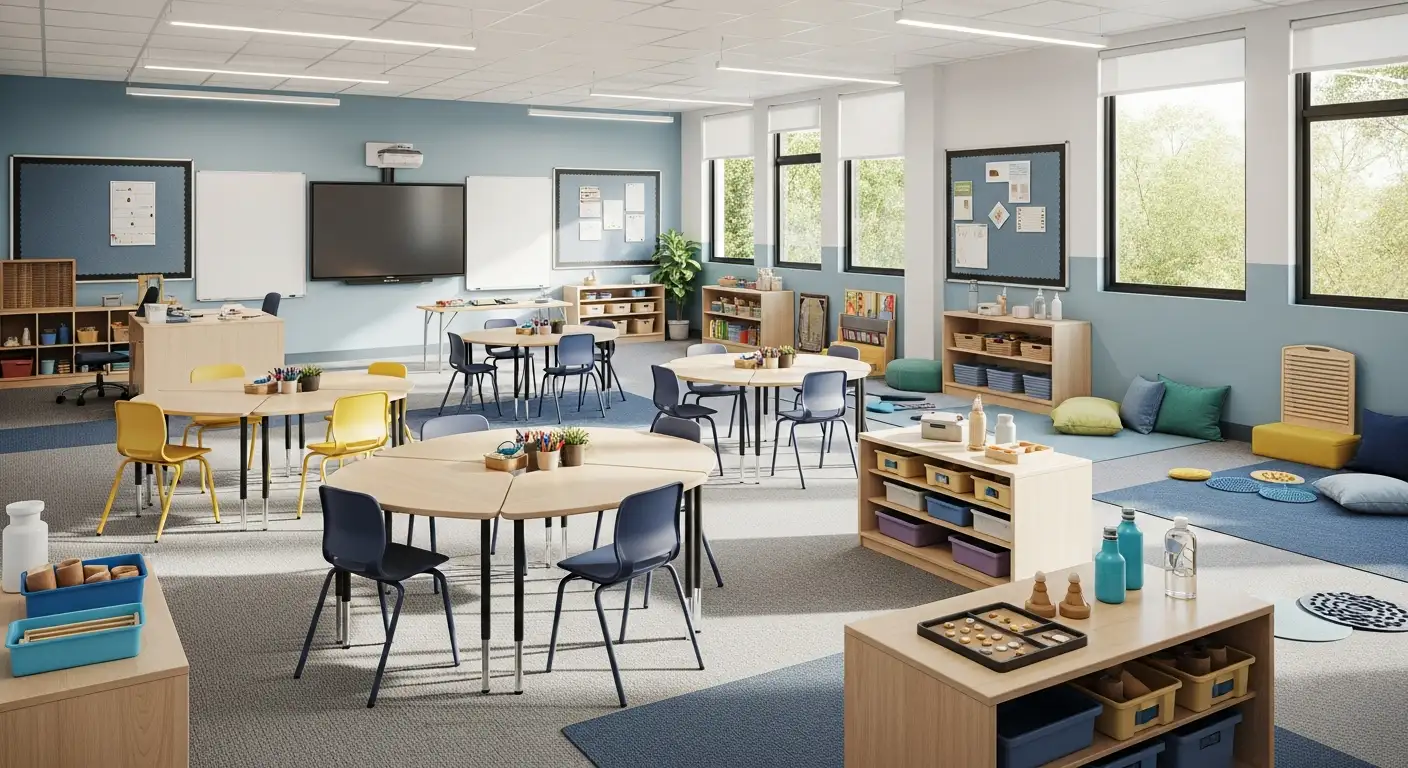Understanding the Role of ABA in Teaching Phone and Communication Safety
Applied Behavior Analysis (ABA) is a scientifically validated approach that plays a crucial role in teaching communication and safety skills, particularly for children with autism spectrum disorder (ASD). This article explores how ABA methodologies are applied to develop responsible communication behaviors, focusing on practical strategies for teaching phone and internet safety. Through personalized, data-driven programs, ABA helps learners acquire vital skills that promote independence and social engagement, ensuring they can navigate the complex digital and social landscapes safely.
Core Principles and Methodologies of ABA in Teaching Safety Skills

What are the core principles and methodologies of Applied Behavior Analysis (ABA) for teaching communication and safety skills?
Applied Behavior Analysis (ABA) is a scientific approach grounded in the principles of learning and behavior. It emphasizes understanding how behaviors work, how they are influenced by the environment, and how individuals learn new skills. Core to ABA are techniques like positive reinforcement, prompting, modeling, and behavior chaining, which help teach functional communication and safety skills.
ABA employs various methodologies to ensure effective teaching. Functional Communication Training (FCT) helps individuals replace problematic behaviors with appropriate communication. Discrete Trial Training (DTT) offers highly structured teaching sessions that break skills into small, manageable steps. Natural Environment Teaching (NET) focuses on applying skills in everyday settings, making learning more functional and generalizable. Additionally, visually supported strategies, such as picture schedules and social stories, enhance understanding and retention.
Behavioral assessments are essential components of ABA. These assessments identify an individual’s specific needs, strengths, and challenges. By analyzing antecedents, behaviors, and consequences (A-B-Cs), therapists can determine what triggers certain behaviors and how to modify the environment to promote desired responses.
Intervention plans are personalized, designed by qualified and trained behavior analysts, often certified as Behavior Analysts (BCBAs). These plans target particular skills like requesting, turn-taking, self-advocacy, and safety behaviors, including phone skills and emergency procedures.
Data collection and ongoing progress monitoring play critical roles in ABA. Regular data recording allows practitioners to measure improvements, adjust interventions, and ensure that the individual progresses toward their goals. This evidence-based approach maintains the flexibility and responsiveness necessary for effective teaching.
Overall, ABA combines scientific principles with individualized strategies to equip people of all ages with essential communication and safety skills. Whether for enhancing social interactions or teaching children how to call emergency services safely, ABA remains a highly effective and adaptable treatment method.
| ABA Methodology | Description | Application Examples |
|---|---|---|
| Positive Reinforcement | Using rewards to increase desirable behaviors | Encouraging a child to use a phone or ask for help |
| Prompting | Providing cues to facilitate correct responses | Hand-over-hand guidance for dialing a number |
| Modeling | Demonstrating behaviors for imitation | Showing a peer how to state their name over the phone |
| Behavior Chaining | Linking simple behaviors into complex sequences | Teaching a child to follow steps in making a call |
| Functional Communication Training (FCT) | Replacing problem behaviors with functional communication | Teaching a child to ask for help during emergency situations |
| Discrete Trial Training (DTT) | Structured, step-by-step teaching sessions | Practicing greeting in social interactions |
| Natural Environment Teaching (NET) | Teaching skills in real-life settings | Practicing safety conversations during outings |
| Visual Supports | Using pictures or symbols to aid understanding | Visual cues for answering or making phone calls |
How do behavioral assessments support personalized intervention?
Behavioral assessments enable practitioners to understand each individual’s unique behaviors and learning needs. By analyzing the antecedents triggering behaviors, the behaviors themselves, and the consequences maintaining them, therapists can develop tailored strategies. This approach ensures that interventions are relevant and effective, focusing on skills like communication, social interaction, and safety. It also guides the data collection process, helping to track growth and make necessary adjustments over time.
Supporting Communication Development in Children with ASD
'Supporting children with autism spectrum disorder (ASD) in developing effective communication skills is vital for their social integration and independence. Applied Behavior Analysis (ABA) plays a crucial role in this process by applying evidence-based techniques that systematically teach and reinforce communication behaviors.
Speech and Language Development ABA therapy helps children expand their vocabulary, improve sentence structure, and understand social cues. It targets both expressive language, enabling children to share their thoughts and needs, and receptive language, which involves understanding instructions, questions, and non-verbal cues. Personalized programs are designed to foster growth in these areas, making communication more natural and effective.
Visual Supports and Augmentative Communication Visual supports are fundamental tools in ABA interventions. Picture Exchange Communication System (PECS), speech-generating devices, and visual schedules help children understand and communicate more effectively. These aids bridge gaps for children who may struggle with spoken language and provide alternative ways to express themselves. Visual cues also help in teaching complex skills like turn-taking, conversation starters, and safety protocols.
Functional Communication Training (FCT) FCT emphasizes replacing challenging behaviors with functional communication skills. For example, instead of tantrums or aggression, a child might learn to use a word, gesture, or device to get their needs met. FCT is integrated into individualized ABA programs, ensuring that each child's communication goals align with their daily life experiences. This approach increases independence and reduces problem behaviors.
Modeling and Reinforcement Techniques Modeling is a core component of ABA, where therapists demonstrate appropriate communication behaviors that children are encouraged to imitate. Reinforcement strategies, such as praise or tangible rewards, motivate children to practice these skills. Techniques like prompting—giving cues during communication attempts—and gradually reducing support help children gain confidence and mastery.
Teaching Communication Skills Specific to Contexts like Phone Use Given the importance of social interactions during times of social distancing, specialized skills such as phone safety and conversation skills are taught. Children learn skills like dialing, answering, initiating conversations, passing messages, and understanding safety-related calls for emergency help. Strategies involve breaking skills into manageable steps, using visual aids, practicing prior to actual calls, and providing feedback.
Technology and Practice Opportunities Tools like video calls, apps, and social stories provide additional practice outside of direct therapy. Structured activities, role-playing, and involving family members in training bolster generalization of communication skills to everyday settings.
Summary Table of Techniques for Developing Communication in Children with ASD
| Technique | Description | Example Uses |
|---|---|---|
| Visual Supports | Using images, symbols, or devices to aid understanding and expression | PECS, communication boards |
| Modeling | Demonstrating appropriate communication behaviors | Showing how to ask for help |
| Reinforcement | Rewarding communication efforts | Praise, stickers |
| Functional Communication Training | Teaching practical ways to communicate needs | Using gestures to request items |
| Prompting and Fading | Providing cues and gradually removing assistance | Guiding a child to answer a question |
| Technology Tools | Using apps and video calls for practice | Role-playing conversations |
In summary, ABA offers a comprehensive set of strategies that are tailored to each child's learning style and needs. By combining visual supports, modeling, reinforcement, and technology-based practice, children with ASD can develop functional communication skills that improve their ability to interact socially and navigate daily life successfully.'
Teaching Phone Skills Using ABA Techniques
How can ABA be used to teach children communication safety skills?
Applied Behavior Analysis (ABA) provides a structured and evidence-based approach to teaching vital communication safety skills to children with autism. These skills are essential for maintaining social connections and ensuring safety, especially during times of physical distancing like the COVID-19 pandemic.
Dialing and answering calls
Teaching children how to dial or answer the phone begins with breaking down the process into manageable steps. Visual aids, such as picture cards or scripts, can help children recognize what to do at each stage. Practice sessions, using role-play or actual phone calls, reinforce these skills. Prompting and feedback are crucial, along with positive reinforcement when the child successfully completes each step.
Starting and ending conversations
Children can learn to initiate conversations with greetings and to politely end calls. Visual cues and rehearsing common phrases reinforce these social routines. Using structured scripts during practice helps children develop confidence and consistency in their interactions.
Passing messages and making calls for specific purposes
ABA strategies encourage practicing passing messages accurately and making calls for specific reasons, like checking in with family or requesting help. These can be trained through role-play, with clear instructions, prompts, and reinforcement. Visual supports may include message templates or checklists.
Practicing safety behaviors: checking in and emergency calls
Safety is a critical component of communication skills. Teaching children to check in with a trusted adult regularly, and how to make emergency calls, involves explicit instruction, modeling, and rehearsal. Visual supports such as emergency exit maps, scheduled check-in times, and social stories enhance understanding. For emergency calls, children should learn to communicate their location, describe the issue, and ask for help.
Strategies for effective teaching
Implementing these skills requires breaking tasks into small steps, using visuals, planning relevant content, and involving conversation partners for practice. Using technology like video calls or apps such as Marco Polo allows for structured and real-world practice. Prompting during actual calls and providing consistent feedback reinforce learning and build confidence.
Overall, integrating ABA techniques ensures that children develop practical communication safety skills tailored to their individual needs and abilities, supporting independence and safety in everyday life.
ABA Teaching Strategies and Styles for Skill Acquisition

What are common ABA teaching strategies and styles used for instruction?
Applied Behavior Analysis (ABA) employs various instructional strategies tailored to meet individual needs across different settings. Among these, some are highly structured, while others are more naturalistic.
Discrete Trial Training (DTT) is a systematic approach that breaks down complex skills into small, manageable steps. Each trial involves delivering a specific instruction, providing reinforcement upon correct responses, and using prompts as needed. This method emphasizes repetition and consistent reinforcement, making it effective for teaching foundational skills such as communication, self-care, and academic tasks.
Natural Environment Teaching (NET) prioritizes learning within the learner’s everyday context. Instead of structured drills, it creates opportunities for skill practice during typical activities, aligning lessons with the child's interests. This approach promotes motivation, generalization, and social interaction by embedding teaching moments into natural routines.
Pivotal Response Training (PRT) focuses on pivotal areas like motivation and self-management. Instead of targeting isolated behaviors, PRT encourages initiations, helps enhance social engagement, and increases the motivation to learn through child-led activities and natural reinforcement.
Visual supports like Video Modeling (VM) and Video Self-Modeling (VSM) are tools that help children learn new behaviors by watching videos of themselves or others demonstrating the desired skills. These visual cues simplify complex tasks and improve imitation skills.
Other techniques include behavior chaining, which teaches multi-step behaviors through linking individual responses; prompting and fading, which involves providing assistance and gradually removing it; and shaping, where successive approximations create new behaviors.
Reinforcement strategies such as token economies, behavior contracts, and the use of assistive technology can motivate children and foster independence. Collectively, these methods harness the science of learning and behavior to support skill development in various domains—from communication and social skills to safety and daily living.
How do these strategies support communication and safety skills?
Effective communication and safety skills are vital for independence and social inclusion, especially for children with autism. ABA programs utilize these strategies to teach skills like dialing phones, starting and ending conversations, and responding appropriately.
Structured approaches like DTT break down each component of communication—such as answering questions or passing messages—allowing children to master each step with targeted reinforcement.
In natural contexts, children learn to initiate calls, respond to questions, and manage topics through incidental teaching and natural reinforcement, helping skills carry over into real life.
Visual supports, such as video modeling, can teach safety procedures, including checking in with family, calling emergency numbers, or reporting unsafe situations.
Strategies also include practicing safety-related communication over simulated calls or using apps for asynchronous communication like video calls or message platforms, which can reinforce safe and functional use of phones.
Strategies for teaching communication and safety skills include:
- Breaking down skills into manageable steps
- Using visual cues and prompts
- Planning realistic social scenarios
- Enlisting conversation partners for practice
- Repeated rehearsals with feedback
- Utilizing technology tools to simulate real-life situations
This intensive, tailored approach ensures children develop the communication and safety skills needed to navigate their environment confidently and securely.
Visual Summary of ABA Teaching Techniques for Communication and Safety Skills
| Technique | Description | Application Example |
|---|---|---|
| Discrete Trial Training (DTT) | Structured teaching breaking skills into small units with prompts and reinforcement | Teaching a child to answer the phone by prompting and reinforcing correct responses |
| Natural Environment Teaching (NET) | Learning in everyday contexts focusing on interests and motivation | Practicing polite greetings during play or routines |
| Pivotal Response Training (PRT) | Focusing on motivation and natural reinforcement for social skills | Encouraging initiations during preferred activities |
| Video Modeling (VM, VSM) | Watching videos of behaviors for imitation | Showing a video of a child safely calling emergency services |
| Behavior Chaining | Teaching multi-step tasks in sequence | Making a phone call from start to finish |
| Prompting and Fading | Providing cues and gradually removing prompts | Guiding a child through dialling before letting them try independently |
| Reinforcement Strategies | Using rewards to increase desired behaviors | Giving praise or tokens when a child successfully answers a call |
Final Overview of ABA Strategies for Communication and Safety Skills
| Strategy | Type | Focus Area | Typical Technique | Benefits |
|---|---|---|---|---|
| DTT | Structured | Basic communication skills | Small step tasks, reinforcement | Clear learning steps, high control |
| NET | Naturalistic | Social and safety skills | Incidental teaching, everyday contexts | Generalization, motivation |
| PRT | Naturalistic, child-led | Social engagement, motivation | Reinforcement of pivotal behaviors | Increased motivation, spontaneous behaviors |
| Visual Supports | Visual aids | Imitation, safety procedures | Video modeling, visual prompts | Simplifies learning, improves imitation |
These varied techniques, grounded in behavioral science, help children build essential skills for communication and safety, fostering independence and social integration.
Characteristics of a Successful ABA Program
What are the essential characteristics of successful ABA programs?
A well-designed Applied Behavior Analysis (ABA) program is built around several fundamental features that ensure its effectiveness and sustainability.
Most notably, successful ABA interventions are highly individualized. Each program is tailored to meet the unique needs, strengths, and goals of the person receiving therapy. This personalized approach helps address specific challenges while boosting skills that matter most to the individual and their family.
Data-driven decision-making is at the core of effective ABA practices. Programs continuously track progress through objective measurements, allowing behavior analysts to analyze data and modify strategies as needed. This rigorous monitoring ensures that interventions are both efficient and impactful.
Collaboration plays a crucial role in developing and maintaining successful ABA programs. Behavior analysts work closely with families, educators, therapists, and other professionals. This teamwork promotes consistency across different environments and reinforces learning and behavior change.
Furthermore, good ABA programs focus on fostering functional and socially significant outcomes. They prioritize skills that improve the individual’s independence and ability to participate meaningfully in their community and daily life. These include communication, social skills, academic skills, and everyday living abilities.
The program's success also hinges on adherence to scientifically validated principles. Techniques such as positive reinforcement, shaping behaviors gradually, and conducting functional assessments help create effective interventions. Continuous assessment and adjustment are vital to adapting strategies to the changing needs of the individual.
In addition to being evidence-based, high-quality ABA programs involve thorough training of professionals and active participation of family members. This comprehensive approach guarantees that strategies are consistently applied, fostering lasting behavioral improvements.
Overall, incorporating these characteristics—individualization, data use, collaboration, and a focus on meaningful outcomes—drives the success of ABA therapy and helps individuals achieve greater independence and participation in their communities.
Additional Resources and Free Learning Opportunities in ABA and Internet Safety

Are there free resources or courses available for learning about internet safety and ABA techniques?
Yes, a wide array of free resources and courses are accessible online for those interested in learning about applied behavior analysis (ABA) and internet safety. These resources are suitable for parents, educators, and individuals seeking to enhance their understanding and skills without financial investment.
For internet safety education, programs like the FBI Safe Online Surfing (SOS) Internet Challenge provide engaging, age-appropriate activities aimed at children in grades 3 through 8. These activities focus on critical safety topics such as cyberbullying, password security, and social media awareness. Schools and families can utilize these materials to encourage responsible online behavior.
Khan Academy offers a comprehensive free course on internet safety, which includes instructional videos and exercises designed to educate about data privacy, device security, and safe online practices. This platform serves as an excellent starting point for learners of all ages.
In addition, platforms like Banzai and Google's Be Internet Awesome provide interactive online courses, tutorials, and games that make learning about internet safety engaging and memorable. These resources are geared toward students and educators aiming to foster safe digital habits in children.
Regarding ABA, many organizations and universities offer free educational materials and introductory courses. These materials cover fundamental concepts such as reinforcement, antecedents, behaviors, and consequences, helping caregivers and teachers apply ABA principles effectively.
Community programs also play a vital role. Local non-profits and health organizations often host free workshops, webinars, and support groups focused on ABA therapy strategies, especially for families with children diagnosed with autism.
Furthermore, numerous online platforms host webinars, podcasts, and downloadable guides that delve into ABA techniques, tailored to various age groups and needs. These resources are regularly updated and developed by experienced behavior analysts and ABA practitioners.
Utilizing online search queries like "Free ABA resources and internet safety courses" can lead individuals directly to many of these valuable tools, ensuring that learning can continue without financial barriers.
Below is a summary table highlighting some notable free resources and their main features:
| Resource Name | Focus Area | Educational Content | Additional Notes |
|---|---|---|---|
| FBI SOS Challenge | Internet Safety | Cyberbullying, social media, passwords | Suitable for grades 3-8 |
| Khan Academy | Internet Safety | Data protection, device security | Suitable for all ages |
| Be Internet Awesome (Google) | Internet Safety | Interactive games, curricula | For students and teachers |
| Local Community Programs | ABA and Autism Support | Parent workshops, therapy tips | Varies by location |
| Online Platforms & Webinars | ABA Techniques | Reinforcement, behavior management | Continuous updates and expert-led |
Exploring these resources can be particularly beneficial for families, educators, and individuals seeking to build safer online habits and deepen their knowledge of ABA methods, all at no cost. As digital safety and behavioral support evolve, staying informed through accessible education ensures better protection and more effective assistance.
Integrating ABA Into Daily Life and Community Settings for Safety

How can ABA be applied to community training and generalization?
Applied Behavior Analysis (ABA) encourages the transfer of learned safety and communication skills from structured therapy sessions to real-world community settings. Practicing skills like crossing streets safely, recognizing emergency signals, or navigating public transportation in various environments helps children and adults generalize these behaviors across different contexts.
Behavior analysts design specific community training programs that simulate real-life situations, using role-playing and supervised practice. By gradually increasing complexity and introducing distractions or unexpected events, these programs prepare individuals to respond appropriately in their communities.
How is ABA used for workplace safety applications?
Although workplace applications of ABA are less common, principles of behavior analysis are useful for training employees, including those with autism or other developmental differences, to follow safety protocols. This includes understanding signs, using protective gear, and following emergency procedures.
Effective ABA-based workplace training involves breaking down safety procedures into clear steps, offering visual cues, and reinforcing correct behaviors consistently. Repeated practice and prompt feedback ensure that safety behaviors become habitual, reducing the risk of accidents.
How can families be involved in ABA for safety and daily life?
Family involvement is essential for maintaining safety and social skills learned through ABA. Caregivers are trained to teach and reinforce skills like answering phone calls, seeking help in emergencies, and practicing social interactions.
Parents and family members can incorporate these skills into daily routines, using visual aids, role-playing, and consistent feedback. By creating a supportive environment, families help reinforce learning outside therapy sessions, encourages independence, and enhances overall safety.
How does technology support reinforcement and generalization of skills?
Technology plays a significant role in reinforcing ABA strategies and extending learning beyond face-to-face sessions. Video conferencing tools like Zoom, and apps like Marco Polo, facilitate asynchronous communication, allowing children to practice phone and conversation skills in familiar settings.
Interactive apps can provide visual cues, prompts, and immediate feedback, making learning engaging and effective. Digital reinforcement programs, such as token systems or points earned via apps, motivate learners to practice new skills consistently.
Community and daily life safety skills are crucial for fostering independence and security.
| Application Area | Techniques Used | Examples | Benefits |
|---|---|---|---|
| Community Training | Role-playing, real-life simulations, visual supports | Crossing streets, public transportation | Skill generalization, independence |
| Workplace Safety | Step-by-step procedures, visual cues, reinforcement | Emergency protocols, proper use of equipment | Reduced accidents, confidence |
| Family Involvement | Reminders, modeling, practice routines | Phone safety, asking for help | Increased safety, social competence |
| Technology Use | Video calls, apps, digital reinforcement | Practicing conversations, remote skill monitoring | Flexibility, engagement, consistent reinforcement |
By combining structured ABA techniques with real-world practice and technology, individuals are better prepared to navigate their communities safely and confidently. Involving families and leveraging accessible tools further support sustainable skill development, ensuring safety remains a priority across all aspects of daily life.
Conclusion: Promoting Safe Digital and Social Interactions
 Applied Behavior Analysis (ABA) stands out as a well-established, evidence-based approach for improving communication, social skills, and safety awareness in individuals with autism. Extensive research supports its effectiveness in fostering meaningful progress across various domains. Studies have shown that ABA techniques significantly enhance expressive and receptive language abilities, improve social interactions, and promote adaptive behaviors such as recognizing dangerous situations and managing internet safety.
Applied Behavior Analysis (ABA) stands out as a well-established, evidence-based approach for improving communication, social skills, and safety awareness in individuals with autism. Extensive research supports its effectiveness in fostering meaningful progress across various domains. Studies have shown that ABA techniques significantly enhance expressive and receptive language abilities, improve social interactions, and promote adaptive behaviors such as recognizing dangerous situations and managing internet safety.
The endorsement from the US Surgeon General and the American Psychological Association underscores the importance of ABA as a trusted treatment. Ongoing research continues to evolve ABA methods, emphasizing personalized goals that meet each individual's needs. Data-driven strategies help in tracking progress and ensuring skills are transferred to real-world settings, making these skills more functional and socially relevant.
Key findings from research highlight that when ABA programs incorporate teaching safety behaviors—like internet use and phone safety—the results include better safety awareness and independence. For example, training children to dial emergency numbers, recognize online risks, or handle social interactions over the phone can foster confidence and safety.
Consistent practice and reinforcement remain vital in solidifying these skills. Structured routines, visual cues, and technological tools such as video calls and communication apps like Marco Polo facilitate learning and generalization of skills. Tailoring approaches to children’s interests and abilities enhances engagement and success.
Parents, educators, and therapists are encouraged to work collaboratively. By understanding the evidence supporting ABA, they can advocate for and implement strategies that boost both communication and safety. Ongoing efforts to refine teaching methods and adapt lessons in natural contexts ensure that individuals with autism grow more independent and prepared for life's social and digital demands.
In conclusion, the scientific backing for ABA affirms its role in enabling safe, functional, and meaningful social interactions. Continued commitment to personalized, data-informed practices will help maximize positive outcomes and support individuals in navigating today's complex social and digital environments.
Fostering Independence and Safety in a Digital World
ABA's evidence-based methodologies provide a solid foundation for teaching children, especially those with ASD, essential communication and safety skills. By personalizing interventions, incorporating visual supports, and engaging caregivers and community resources, ABA programs can promote safer interactions with technology and social environments. Continued practice, reinforcement, and collaboration among parents, educators, and professionals ensure these skills are generalized and maintained, empowering children to navigate their digital and physical worlds confidently and safely.
References
- Applied Behavior Analysis (ABA) | Autism Speaks
- How can I teach telephone skills at home?
- Enhancing Communication Skills With ABA Therapy
- Applied Behavior Analysis and Communication Services - ASHA
- 4 Methods for Increasing Communication Within Applied Behavior ...
- Bridging the Gap: Functional Communication in ABA
- Applied Behavior Analysis (ABA) | Autism Speaks



